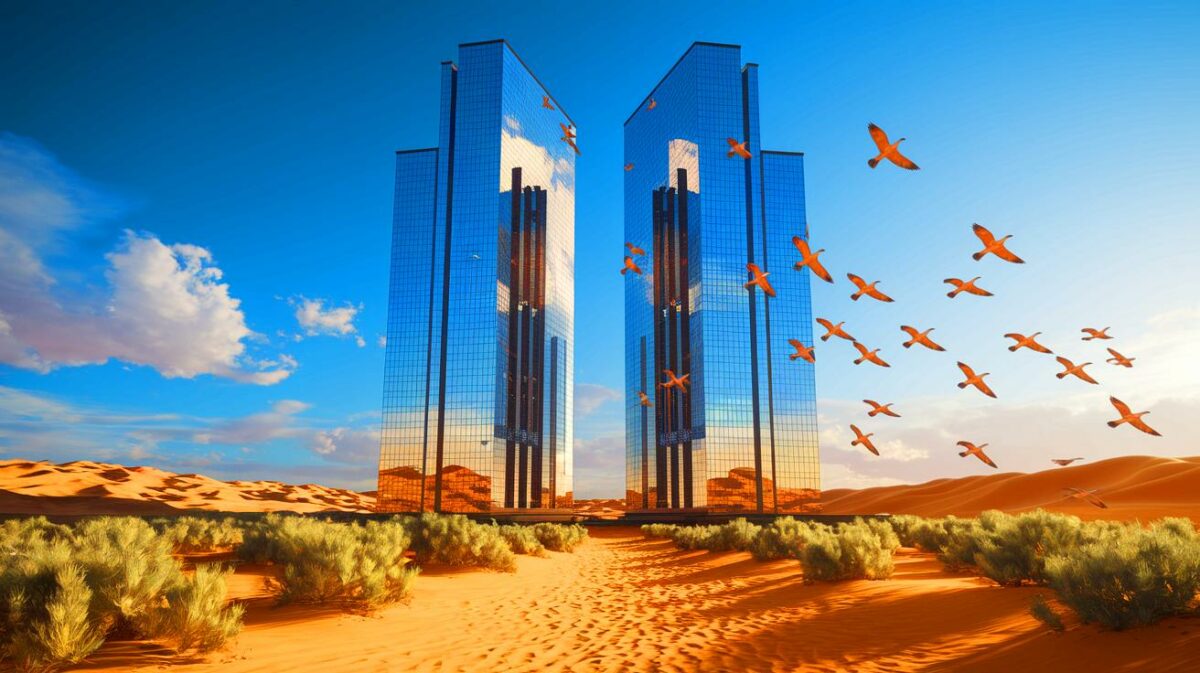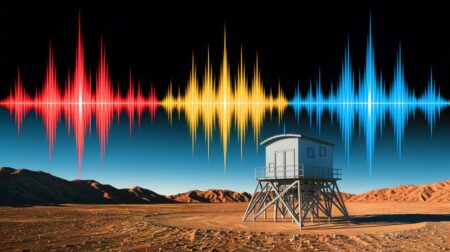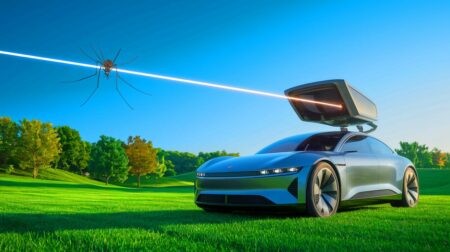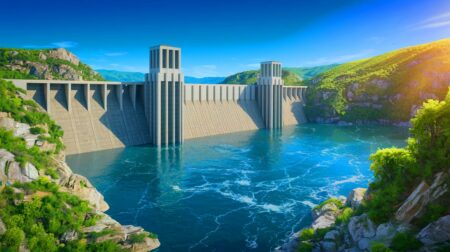| IN A NUTSHELL |
|
In the heart of the Saudi Arabian desert, a groundbreaking project known as The Line has captured global attention. This audacious endeavor, part of the larger NEOM initiative, aims to redefine urban living by creating a futuristic cityscape. Yet, amid the excitement, serious concerns have emerged, particularly regarding the potential environmental impact on local wildlife. As this ambitious vision unfolds, it raises fundamental questions about the delicate balance between technological advancement and ecological preservation.
A Monumental Undertaking in the Desert
The NEOM project, a cornerstone of Saudi Arabia’s Vision 2030, seeks to transform a vast expanse of desert into a cutting-edge urban hub. This linear city is projected to stretch 105 miles (170 km) and rise 1,640 feet (500 meters) into the sky, housing up to nine million residents. With its mirrored facade, The Line promises a blend of sustainability and innovation. However, the project faces scrutiny over its potential threat to local biodiversity, particularly avian life.
Despite its sustainable aspirations, internal documents hint at significant concerns about the project’s impact on migratory birds. The structure’s reflective surfaces and towering presence pose a grave risk to these creatures, prompting environmentalists to question the feasibility of harmonizing such grand urban visions with nature’s delicate ecosystems.
Ecological Concerns Loom Large
Sitting on a major migratory route, The Line represents a significant hazard for billions of birds. The mirrored skyscraper stands as a potential death trap for these winged travelers. The developers acknowledge the inevitable loss of avian life, sparking a heated debate on the intersection of urban expansion and wildlife conservation.
As illustrated in the table below, the challenges are multifaceted:
| 🦅 Avian Impact | A Threat to Migratory Birds |
|---|---|
| 🏙️ NEOM Project | Desert Transformation into a Futuristic City |
| 🌿 Sustainability | An Ecological Ambition Under Scrutiny |
| 📉 Delays | Cumulative Construction Challenges |
The plight of these birds underscores broader questions regarding urban development in environmentally sensitive areas. How can we ensure that our quest for innovation does not come at the cost of biodiversity and ecological balance?
Delays and Challenges Abound
The environmental implications are not the only hurdles facing The Line. Construction delays have plagued the project, with projections now estimating just 300,000 inhabitants by 2030, far below the ambitious target. The reality on the ground reveals a stark contrast to the envisioned eco-paradise, with construction primarily focused on excavation and numerous foundational challenges.
“Nature’s hidden empire”: This massive, fungus-like organism could redefine the entire tree of life
Key issues include:
- Construction setbacks
- Balancing nature and urbanization
- Impact on biodiversity
- Project delays
These complications highlight the intricate challenges of pursuing sustainable construction in fragile environments. What sacrifices are we willing to make in the pursuit of technological and architectural progress?
As The Line progresses, it serves as a poignant case study in the ongoing dialogue about sustainable development. The project’s ambitions are as vast as the desert it seeks to transform, but at what cost to the environment? How can we balance the scales between innovation and nature’s preservation, ensuring that future generations inherit a world that is both advanced and ecologically sound?
Did you like it? 4.6/5 (29)









Wow, a 105-mile-long skyscraper! Will it have a Starbucks every mile? ☕
Is there any technology being developed to prevent bird collisions with The Line?
I have watched several videos on the construction of this behemoth, it looks like they are already over budget and trying to see investors on it. To what avial are people going to want to live in and inhabitate a smart city in the middle of the dessert with no cars, and a transit system connecting residents?
Untested technologies and what ifs abound as to if it’s even going to work, here is a red herring, or canary in the coal mine, the projects length has already been truncated.
This tells me they don’t even know if it’s going to work for certain.
Already downsized by over 90% (?)
And STILL they need outside investment.. it’s a poorly designed project, that nobody wants a part of…
Futuristic for the sake of it – with little thought of actual people’s lifestyles and preferences..
Ifr NYC bfl xjr mtx alr myclver bsi nez XLR Paz xea by mdo xom nrw lo
Why do they not build North/South instead of East/West? The idea was ok……..
There’s an infrared film that can be put on the mirrored glass that birds are able to see so they can avoid it and it doesn’t change the look of it at all there’s that little cube mirrored cabin I think in Sweden or somewhere that used this technology this is just unnecessary fear-mongering as the problem was solved years ago
100% for that.
People will always be arrogant and stupid.
Build the buildings, but di it responsibly
Exactly.Maybe high frequency sonar- something akin to what was placed inside Croatia’s sculpture of King Tomislav to ward of pigeons (and their droppings) but on a much larger scale
“Leave room for nature”
“Leave room for nature”
J.c.c.
Yes. It’s called the mirror system. So birds don’t fly into each other. It is 105 mile mirror system the birds are not going to run into themselves when they come even close to it they’re going to pause stop go above around or find a way to adapt just like nature is meant to the only reason they are giving him problems is because he’s trying to do something good look at what good people get and look at what bad people get one’s rich and one’s poor
I’m all for innovation, but at what cost to nature? We must find a balance.
We’re a little late for balance.
A high tech prison.
Why such a big fuss about this fake news!? It’s not gonna happen. They’re struggling to keep it up at all levels (at the moment the line is reduced to less than a mile long, and even that it’s pretty much like a dream). So there’s no point to discuss something that probably will not happen, and if it does, it’ll be a 100th of its initial project. So it’s useless!!
Pretty easy to see it’s massive way longer than a mile and not fake news just look at Google earth. It’s going to be a huge problem
Why don’t they create large multilevel passages through the building in places to allow the migrating birds to pass through the building safely? If it’s 500 meters high and 105 miles long, here would be room for three or four 25 foot high with multiple 50 or 100 foot wide clear open passages through the building for bird migration.
Thank you for shedding light on this issue. It’s a reminder to consider wildlife in urban projects.
This project will take at least 300 years to complete, on my reckoning. In other words, it won’t happen. The birds can breathe a sigh of relief.
A high tech prison.
Let all these critics first focus on removing plastics from the oceans….
Plastics? Oh no, thats something the west caused so we can ignore that, lets instead pick on non western nations,ales us feel good
Why can’t they just make the building less reflective? Seems like an obvious solution. 🤔
Can they use AI to track bird migration and adjust lighting or facade transparency?
Isn’t this project just a modern Tower of Babel? Ambitious but risky!
Haven’t they seen the movie Loguns Run. So futuristic and yet so outrageous. With all the information in our world at a fingertip away from our brains. We should hope for more intuitive decision making guiding our path.
What are the potential economic benefits of The Line for Saudi Arabia?
Does it all need to be above ground? Seems like sections could be underground which would help with both environmental and energy issues.
No cars allowed
OMG, this sounds like something out of a sci-fi movie! 🌌
The use of buzzwords is reaching ridiculous levels. Exactly what makes this “sustainable”?
Will there be any compensatory conservation efforts to mitigate the environmental impact?
Is there any public consultation or input on this project?
Sounds like a great idea, but who will actually live there?
That’s a lot of mirrored glass! I hope they have a plan for all those bird strikes. 🦅💔
How does this project align with Saudi Arabia’s Vision 2030 goals?
Why not invest in green spaces instead of more concrete jungles?
The Line could be a game-changer if done right, but it’s a big “if”.
With the delays and challenges, will The Line ever be completed?
I’m skeptical about the sustainability claims. It sounds too good to be true. 🤨
What about the local communities? Will they benefit from this project?
It’s a shame that such an innovative project could harm migratory birds.
So, does this mean we’ll have an entire city in the middle of the desert?
Hope the developers are listening to environmentalists and making necessary adjustments.
Can you imagine the view from the top? Must be stunning! 🏞️
Go Around!
I’m curious about the technology behind this project. How will they maintain such a massive structure?
How will this project affect local temperatures and the desert ecosystem?
This article raises important questions about the ethics of urban development.
Thank you for highlighting the ecological concerns. It’s crucial to keep these issues in mind.
Why not use transparent solar panels to reduce bird strikes and generate energy?
There’s is nothing that should be “alarming” about this project. This project is fraught with massive problems in every aspect of its design and construction and should never have been begun.
Is there any evidence that The Line will actually attract the projected number of residents?
Who’s going to pick up the tons of dead bird bodies around this structure? Mirrored? Really? Worse idea ever.
Who wouldn’t want to live in a futuristic city in the desert? Oh, right, the birds… 😔
What lessons can other countries learn from The Line’s challenges?
It’s ambitious, but is it truly sustainable in the long run?
Hope they have a plan for all that sand and dust! 🏜️
Honestly, I find the whole idea of a mirrored skyscraper in a desert quite bizarre.
So we are taking down all mirror buildings now right matter of fact all reflective surfaces are a danger. If trump the felon thinks windmills harm eagles then this must be a thing
Are all mirrored buildings built in the flight path of billions of migratory birds?? Reading is fundamental!! Smh
Yawn
Moaning about all the wildlife that will be killed, when people have already been killed to make way for it before construction in an area of the world that isn’t known for its workers rights, is a bit like say the main problem with Dennis Nilsen was his irresponsible disposal of his victims caused blockages to the drains!
Did you forget to take your medicine?
It will (hopefully) never be built
This was one of the main points addressed before they ever put a shovel in the ground. That, and imagine the heat and reflection coming off that big of a mirror that will scorch everything as far as the reflection can reach which will be massive as the day goes by
Has anyone thought about the magnification of the light that is reflected from the mirrored surface or has that been thought of and changed because sun hitting a mirror and reflecting to the ground can get very hot
As pointed out by many who contributed comments, this project has many potential flaws – both ecological and structural. Too often, architects come up with project designs based on their egotistical dreams of glory. This project needs to be scrapped.
Read my book. . .”The Redesigned Earth” (2019) by J.T.Tanacredi, Springer-Nature
This design is ludicrous. Back to the drawing board
Does Saudi Arabia really need such a project? Is it because they are fighting congestion on the ground, overpopulation and limited living spaces, or what? I think it’s all down to VANITY! The project doesn’t even reflect desert life, the landscape, or the rich culture of the people #StoptheLine
Read my book, “The Redesigned Earth” which covers all the ecology of engineering. First to explore dam construction an implications to Earth’s rotation. ( 2019, Springer-Nature, by John T. Tanacredi, PhD.
Thanks for sharing
Do I care? Nope. Screw the birds. Very intrested in construction works
Everything Muslims do, is a thorn in westerner genocidials eyes
In order to reduce the massive killing of our birds, the designers of this immense structure need to slope the glass façades outward at the top, such that the façade reflects the ground instead of the sky. This principle has been used successfully in much smaller buildings, but I don’t see why it will not work in this instance.
Hopefully no one pays somebody to fly a jet airliner full of people into their building like Saudis paid terrorists to fly into the World Trade Center on 9/11
Maybe you should remember Birds Fly high in the sky and stop with all the Fake Alarmist Statements.
Nature Adapts!. Volcanos, Floods, Fires, Typhoons, Hurricanes, sinkholes, and a complete other host of natural disasters are constantly changing the landscape. Nature Adapts!
Folly
It’s already failed? I think they are only planning on like 1/4 of a mile now, and some boats.
They have considered a lot of issues including this one many feared in the master plan together including the barrage of allied professionals & consultants b4 the project began.
“Leave room for nature”
“Leave room for nature”
J.c.c.
Sounds a bit futuristic.. Has anyone had a look at the new children’s hospital in Dublin Ireland. “Most expensive hospital in the world. ” They say. And after 30 years in the making, and costing billions, will it ever be finnished from its original construction..
This is so funny and pathetic 🤣😅
As if Birds cannot change directions 🤣🤣
Grow up! Stop whining about what Saudi Arabia is doing and let them build what they want! I don’t think anyone with a half functioning brain would actually cancel a muilt million dollars project, just because the “migration route of birds will get effected”! Like are listening to yourself??🤣🤣 If we care about nature so much; then right next to you in Chicago; stop the factories and stop all the manufacturing facilities!! That’s much better than whining about what Saudi Arabia is doing!!!
One day in the future, very wise people will note that we should have been building underground forever. We have been told over and over again – tornadoes, earthquakes, ongoing rising cost of living, the increasing costs to ecosystems, increasing destructive power of weather systems, and more. Start building 50 feet underground and make it work for underground chickens and underground goats. Not to mention wheat and many other crops in large fields with grow lights. Much of the necessary technology would have been discovered, and it would become as easy as living above ground. Good luck